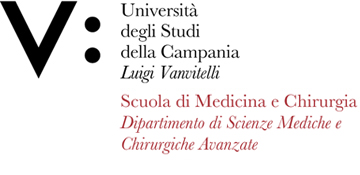Andrea RONCHI
Insegnamento di C I ANATOMIA PATOLOGICA
Corso di laurea magistrale a ciclo unico in MEDICINA E CHIRURGIA (Sede di Napoli)
SSD: MED/08
CFU: 8,00
ORE PER UNITÀ DIDATTICA: 80,00
Periodo di Erogazione: Secondo Semestre
Italiano
| Lingua di insegnamento | italiano |
| Contenuti | parte generale: metodiche di laboratorio in anatomia patologica (fissazione, colorazione, processazione, istochimica, immunoistochimica); campionamento macroscopico; metodiche molecolari in anatomia patologica; il riscontro diagnostico; adattamenti tissutali (iperplasia, atrofia, displasia); staging e grading delle neoplasie; limiti ed indicazioni della citologia (aspirativa, esfoliativa e dei versamenti); infiammazione; aterosclerosi. |
| Testi di riferimento | Ruco Scarpa e coll.: Anatomia Patologica. Le basi (1vol.). EDRA |
| Obiettivi formativi | L’obiettivo del Corso è la comprensione delle modificazioni cellulari, tissutali e |
| Prerequisiti | Anatomia ed istologia dei vari organi ed apparati |
| Metodologie didattiche | Lezioni frontali. |
| Metodi di valutazione | La verifica dell'apprendimento consiste in una prova scritta ed una orale. |
| Altre informazioni | no |
| Programma del corso | 1. PARTE GENERALE |
English
| Teaching language | italian |
| Contents | General part: |
| Textbook and course materials | G. d'Amati e C. Della Rocca, Anatomia Patologica: la sistematica (volumes 1 e 2), second edition, Milan, EDRA ed., 1366 pages. |
| Course objectives | The aims of the course include the knowledge of cellular and tissutal alterations; the knowledge of the nosological classfication of neoplastic and not neoplastic diseases; morphological (macroscopical and microscopical) features of tissues and organs during pathology. At the end of the course, the student will be able to understand limits and possibilities of surgical pathology in the setting of the clinical management; will be able to understand the report of the pathologist; will be able to understand the role of the pathologist in terms of screening, diagnosis and prognosis. The student should connect the morphological and molecular informations with clinical knowledge. |
| Prerequisites | Normal histology and anatomy; physiopathology; main biological markers and instrumental imaging technique. The student should have basic knowledge of clinical medicine and management of the patient. |
| Teaching methods | Frontal lessons. |
| Evaluation methods | The final test include a written and an oral part. The written test is composed by 30 questions in 40 minutes. One point to any correct answer. The minimal score to pass the exam is 18. The oral test is about the whole program. |
| Other information | no |
| Course Syllabus | 1. GENERAL PART |








